
Every business or brand needs to engage with its customers to have any chance of success, and content plays a key role in productive engagements and forming meaningful connections. For optimal results, you need to tap into all types of content and possibly hone in on a few channels that provide the best ROI.
Written content will always be at the forefront of your online marketing campaigns, but infographics, videos, and visual content are as productive, if not more, nowadays.
Today I want to share 17 types of content writing with examples that are sure to provide excellent ROIs. For startups, businesses in the middle of their growth cycle, and/or brands struggling to gain traction with new customers, understanding and utilizing different types of content will certainly help.
Contents
- Types of Content Writing
- Blog Posts
- Landing Pages or Sales Pages
- Location Pages
- Product Category Pages
- E-books, Free Giveaways, and Lead Magnets
- White Papers
- Case Studies
- Customer Success Stories / Testimonials
- FAQs / Resource Centers
- Social Media Content
- User Guides/User Manuals
- How-to Tutorials
- Email Campaign
- Newsletters
- Press Releases
- Guest Blogs
- Interactive Content
- Other Types of Online Content Worth a Mention
- Content Writing to Take Your Business to The Next Level
Types of Content Writing
1. Blog Posts
In today’s world, a business’s online presence is equally (or more) important than its physical presence. And blog posts are one of the most effective ways of creating a strong online presence. They help establish brand awareness, boost traffic to your site, and are great for organic SEO (Search Engine Optimization), improving your search engine ranking. Websites with blogs are 434% more likely to rank higher in search engine results.
Blog posts also help with establishing trust between a business and its consumers. If you frequently and consistently publish entertaining, educational, and informative blog posts on your website, you will eventually claim a thought leadership status and will be considered an authoritative source within your niche. In the short-term, it will help you win new business, and in the long-term, you will be able to retain your clientele, which results in predictable ROIs.
There are several different types of blog-posts, including lists (or “listicles”), tutorials, news, advice, research, strategy, tips, stats, comparisons, checklists, etc.
Example: If you’re looking for an example of a great company blog, check out Moz. It’s an SEO company with one of the widely read and trusted blogs in its niche.
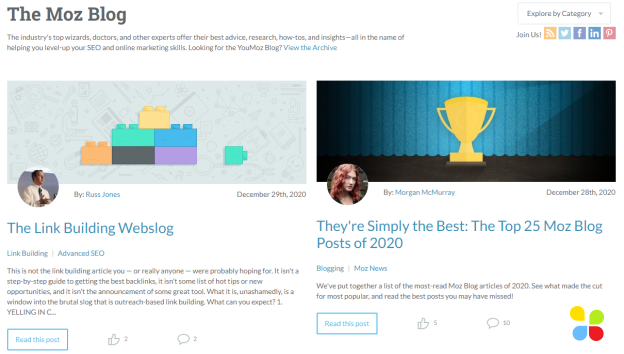
2. Landing Pages or Sales Pages
Landing pages are where your intended viewers “land” after clicking on your website’s link in a promotional email or an online ad (hence the name). The best landing pages convert over 5.3% of visitors, which is more than double the average conversion rate of regular web pages, making landing page writing one of the most important types of online content writing.
The right landing page would improve your conversion rate, enhance a campaign’s ROI, and help you collect valuable user data that can be used to create better offers.
Try this: Create a clear and compelling copy, make it more eye-catching with visuals and videos, add social proof (online reviews), and add just one offer per landing page. Multiple offers on a single landing page can confuse the reader and reduce your conversion rate quite drastically.
Example: Lyft has a great landing page for drivers.
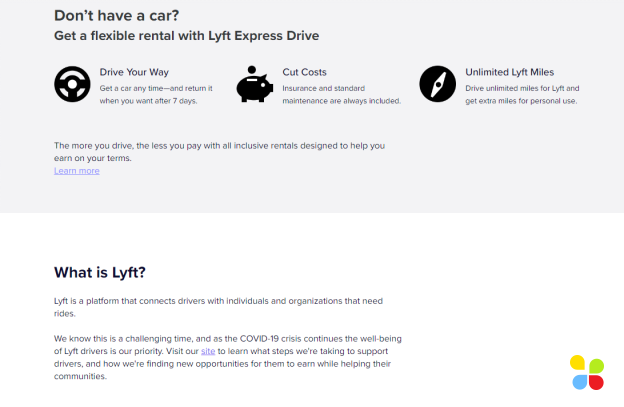
3. Location Pages
As far as the different types of web writing are concerned, location pages are just as important as anything else. Location pages are local landing pages with the sole purpose of providing location-specific information about your business and/or service area. They leverage the power of local SEO, and the content is typically written around long-tail, location-specific key phrases.
This is a great tactic because there is usually less competition for rankings. However, it can also be challenging because if you don’t use and embed location-specific long-tail keywords the right way in your content, the content might read poorly.
On the bright side, well-written location pages can help drive more foot-traffic towards your business locations and positively impact your revenue generation.
Try This: Add all the necessary information regarding your business locations (name, address, phone number), embed a light-weight map to help users find you more easily, include business hours on the page, and try adding some photos. It helps with identification and brand recognition.
Example: First Republic Bank has an easy to navigate, comprehensive location page.
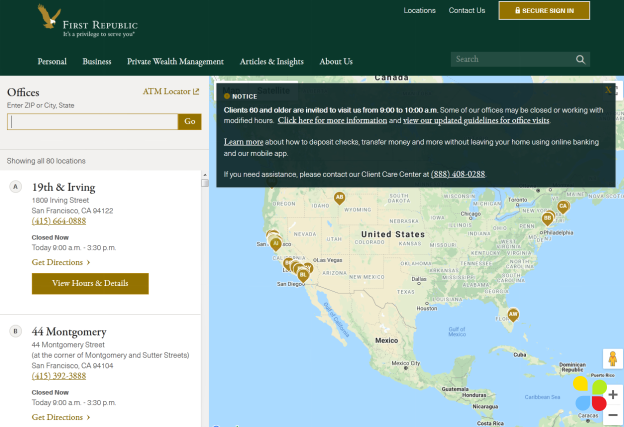
4. Product Category Pages
Product category pages are vital for e-commerce business websites. If your business has an e-commerce front, then writing content for product category pages is something you should only undertake after you’ve done proper research and have analyzed best industry practices.
The content for product category pages must be augmented with proper technical optimization and visuals for maximum impact. Even if the content is to-the-point and compelling, a difficult-to-navigate product category page might drive traffic away.
Try This: Make sure product descriptions are to the point and not too “salesy.” The content should be easy to filter. Use bullet lists and charts to make product details more comprehensive.
Example: Walmart has an easy to navigate product category page.
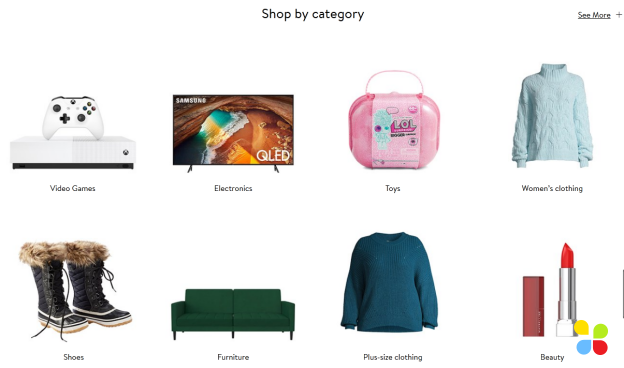
5. E-books, Free Giveaways, and Lead Magnets
Long-form and detailed in-depth content helps a business project credibility and authoritativeness, and very few other types of content do it as well as E-books. E-books are also used as lead magnets (when offered as free digital downloads), and businesses use them for growing their email lists.
When used in later stages of a marketing funnel, an e-book can be used to offer more in-depth information to potential customers and increase the possibility of a conversion. E-books can be instrumental for customer loyalty.
Try This: Create an E-book that offers valuable information or detailed guidance to your viewers. Create a separate landing page for the e-book and “gate” the access to the e-book so that users have to provide their email addresses (and other personal information, if needed) to access the e-book. This will help you grow your email list, which can be essential for your other marketing efforts.
Example: Socialtriggers asks for your name and email address before letting you download a free e-book.
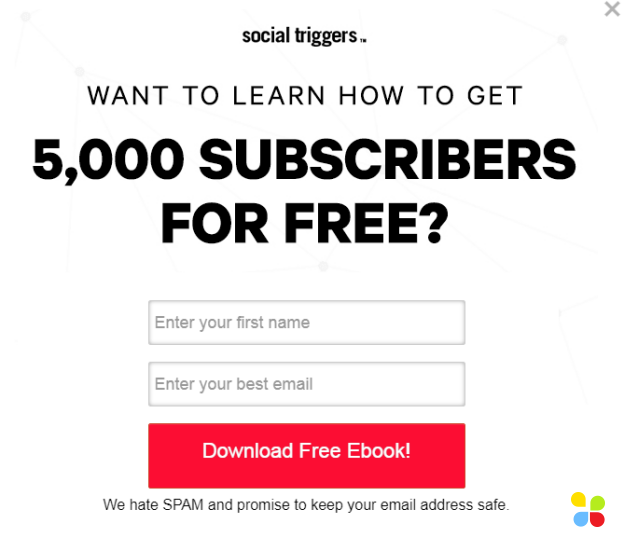
6. White Papers
Several different types of online content writing aim to project credibility because it’s one of the best long-term strategies for getting repeat viewers and establishing yourself as a thought leader in your niche. Of all the types of content creation, white papers are possibly the best at that.
They are authoritative, concise, and comprehensive reports that cover a specific topic or a problem and typically provide a solution.
Contrary to popular belief, white papers can be opinionated and convey an individual’s (or a business’s) unique ideas and solutions regarding a topic, but these opinions have to be backed up by relevant statistics, research, and hard evidence. They help establish you as an authority on a subject and build trust between you and the reader. White Papers should be persuasive, but they should never be tainted with subtle marketing.
Try This: Stay within your domain when writing a white paper. Write as an authority on the subject and tackle a relevant problem. Endorse your solutions and ideas with credible and objective facts and figures. Use comprehensive charts, tables, and infographics to make the data more comprehensive.
Example: Cisco offers a free white paper on the relationship of network and a competitive edge.

7. Case Studies
Case studies are one of the five primary forms of media for 13% of marketers and one of the best types of content writing in terms of ROI. They are especially effective for B2B businesses, but B2C businesses can benefit from writing and publishing case studies as well. Typically, case studies offer an in-depth look into how your services/products helped your clients. For B2B businesses, case studies are just as potent as testimonials.
Case studies offer first-hand insights into the effectiveness of your product and services, and they help you display your competitive edge. They also help endorse the claims you’ve made and give you transparency points (if unbiased). You can also publish case studies that are outside your range of services and products (but are still within your competency domain). You might not get to market your offerings this way, but it will endorse your authoritativeness.
Try This: Tell a story. Focus on the main challenges, your solution, and the results. Include real numbers and present them in a comprehensive form (with charts, graphs, and tables). A case study should be an easy read. Try to be as objective as possible. A customer-centric case study will convert more potential clients than a self-praising litany.
Example: Coalition Technologies offers over 600 case studies and allows you to filter them by industries, services, and platforms.
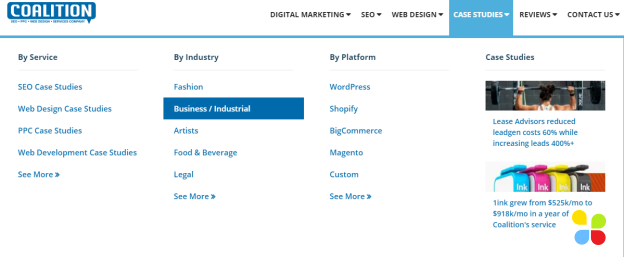
8. Customer Success Stories / Testimonials
Testimonials can be the most compelling content type and a major revenue driver on a B2C business website. 92% of consumers read online reviews and testimonials when considering a purchase, and 95% of people claim that reviews (both negative and positive) and testimonials influence their purchase decision.
This falls outside the different types of content creation you have control over. However, you can still influence it by responding to reviews, which might result in more positive testimonials that you can display on your website.
Try This: Never use fake testimonials. Use the names and photos of customers that offered testimonials. This makes them seem more credible and genuine. Showcase only a few but the best testimonials. Video testimonials are also growing in popularity. Detailed testimonials and success stories inspire more confidence in potential customers.
Example: Slack has a customer story page that displays both detailed success stories and testimonials.
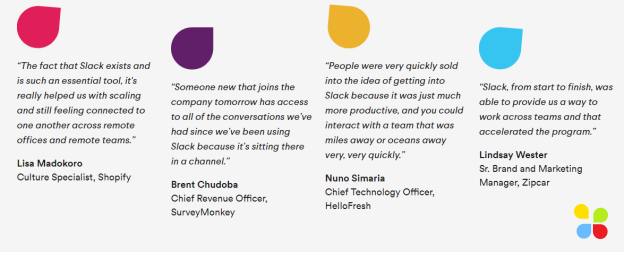
9. FAQs / Resource Centers
One of the best ways of driving more traffic to your website is by creating content that’s helpful for your readers. Resource centers, which are full of helpful literature, help your existing and potential readers by providing them useful information about your products and services. These pages also address any concerns that your website visitors might have. The content on these resource center pages can also be great for SEO since it can be organically created around product-specific keywords.
Frequently asked questions, often part of Resource Centers, address any specific queries your consumers might have. This helps existing customers while also helping you drive more sales, because if potential customers can find a wealth of helpful information clearly sorted in FAQs, they will feel comfortable using your products (or hiring your services).
Search engines also love FAQs because it helps their algorithms understand your business, so they also help with the SEO. A comprehensive list of FAQs also reduces the time and energy your customer services need to expand while answering general queries.
Try This: Create a comprehensive resource center with detailed and easy-to-follow instructions. Divide your FAQ lists by categories, products, or different target markets. Keep updating both your resource center and FAQs with relevant content and whenever you launch a new product or introduce a new service, make sure your helpful resources are updated with relevant information about it beforehand.
Example: Twitter’s new user FAQs are to-the-point, comprehensive, and divided into categories for easy navigation.
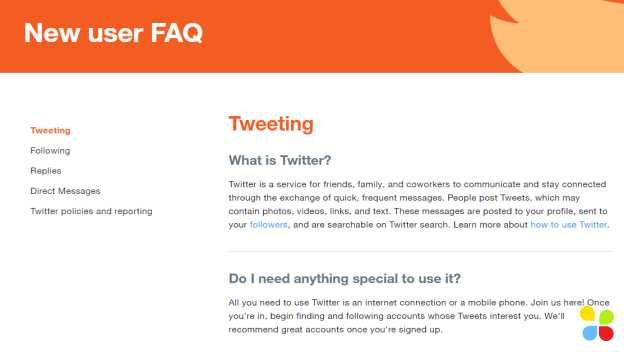
10. Social Media Content
Social media platforms are how brands can effectively connect and engage with their existing and potential customers and project the “human side” of their business. 73% of marketers find social media effective for their business, and different platforms help you connect with different audience segments.
You can create social media content for free and engage with your target audience via your social media posts. If you publish helpful and entertaining content consistently, you might be able to grow your audience over time.
However, when social media management is left to professionals, you’re bound to reap the rewards.
Try This: Choose the right platform to focus your marketing and content creation efforts (Instagram is ideal for engaging with a younger audience. Twitter is great for more sophisticated clientele, etc.). If you are creating content for all social media platforms, make sure it’s tailored/modified for maximum impact for each platform. Connect with your social media followers and use competitions and surveys to engage your audience. Use social media stories and live streams to show people the human/fun side of your business. It would help them relate with you better.
Example: Deloitte has a powerful LinkedIn page where they publish helpful, informative, and news content.

11. User Guides/User Manuals
User guides and manuals help your existing and potential customers understand your product better. A well-written and easy-to-understand user guide will make things easier for your customers and therefore improve satisfaction.
These guides can also reduce the risk of damage and injury while using your products as well.
Try This: Make user guides as comprehensive as possible. Create user-centric content and keep technical jargon to a minimum (unless the content is being created for a tech-savvy audience). Technical writers who are experienced in breaking down and simplifying complex concepts for their readers would be ideal for writing the user guides.
Example: Yoast has a concise and comprehensive guide to help people get started.
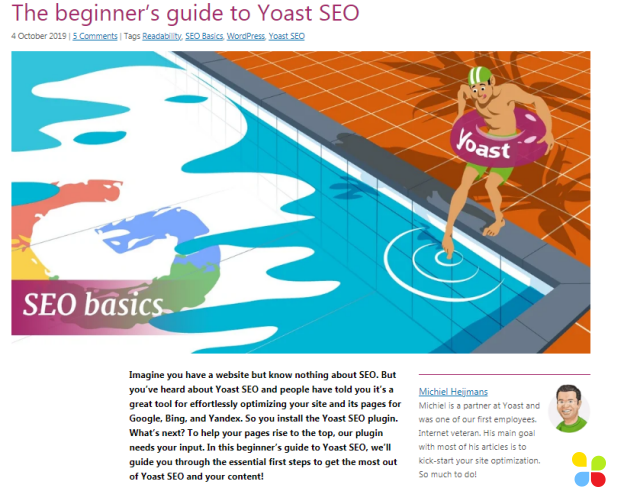
12. How-to Tutorials
Since people seem to absorb video content more effectively and it takes relatively less time, we’ve seen a sharp rise in the number of “how-to” videos. So when you are creating how-to content for your products and on topics that come under your competency domain, the ideal scenario would be to go with both written and video content.
The more options your audience has, the better.
How-to tutorials (both written and video) also build consumer loyalty and bring in repeat visitors to your site. These tutorials can also improve your domain authority because external sources and other websites might link to them.
Try This: Create easy-to-follow steps. Break down the process/problem in as many steps as needed and ensure that no single step is complex enough for viewers to follow. If they have to jump out to another resource for the explanation of a step, they might not come back. Use both audio and written instruction in the video tutorial.
Example: W3Schools is an educational website with one of the most concise “How-to build a website” piece we’ve ever seen.
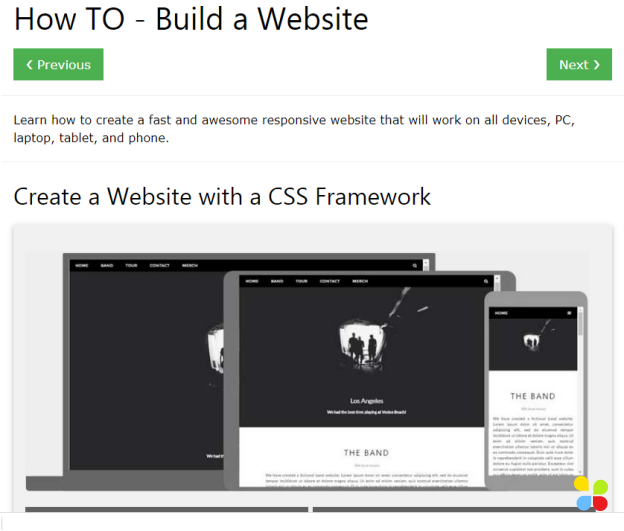
13. Email Campaign
Personalized emails are still a great way to connect with your potential and existing clients. 89% of marketers still use emails as the primary source of generating leads, and they have a 4,200% ROI. As far as the types of content writing that can give you serious returns is concerned, an effective email campaign is right there on the top.
Email campaigns help you create and nurture long-term relationships, allow you to enhance brand awareness and consumer loyalty, and help you with increasing customer LTV (Life-Time Value).
An effective email campaign can be a potent marketing tool, and it has gotten significantly easier to personalize each message thanks to automation.
Try This: Segregate your email list based on segments of your target audience so you can create catchy content for each segment. Instead of buying email addresses, rely on your own lists. Personalize your email greetings and subject lines to ensure they are not doomed for the spam folder. A/B test different subject lines and email formats and go with the best-resulting option.
Example: RunKeeper ran a simple but effective Email campaign.
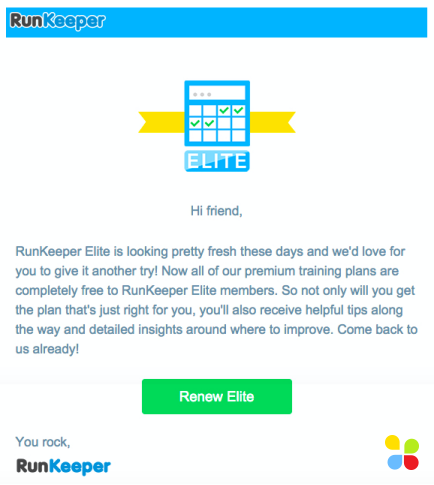
14. Newsletters
While there is a lot of overlap between Email campaigns and a newsletter (CTAs, engagement, building consumer loyalty, etc.), they both have essentially different aims. While email campaigns are for warming leads and achieving conversions, newsletters aim to engage and educate. Newsletters also have higher open rates (more people see the content in Newsletter) than other channels of engagement.
Try This: Optimize your email format and design for all devices, especially mobile phones. Use a compelling subject line that nudges the reader to open and read the content within (compelling does not equal “salesy” here). Keep cleaning your email lists on a regular basis.
Example: A newsletter that starts with educational/informative prompts might get more reads.

15. Press Releases
Press releases are a bit different from most other types of online content writing because they are not written for potential customers or clients. They are written for marketers and reporters. Since they are written for an audience that’s used to sift through piles of data in minutes, they need to be written differently compared to blog-posts and articles.
Try This: Write a killer headline. Get to the meat of the matter fast. Be concise but convey all the relevant information. The writing should be persuasive without being descriptive. Subtly mention the target audience for the product/service you are writing the press release for so the marketers can write their piece about your product accordingly. Use visuals, graphs, and numbers to endorse your claims.
Example: Press releases have to be concise, yet find the balance to catch the eye.
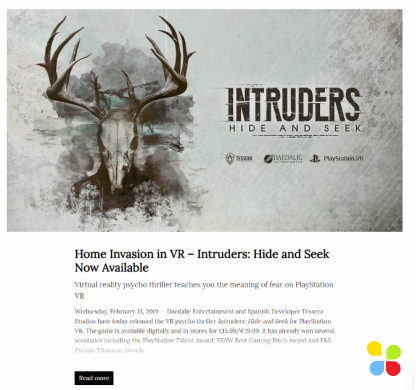
16. Guest Blogs
Guest blogging is an effective way to establish yourself as a thought leader and an authority figure in your niche and build a network of peers. You share your expertise and opinions on other companies’ websites when you write guest blogs, which can be a win-win for both.
The host website gets more valuable content, and you get access to a wider audience. You can also create more helpful backlinks via guest blogging, which results in better SEO and improves your domain authority rating.
Try This: Choose the right website for guest blogging (ideally with similar or better domain authority than your website). You want access to a different/wider pool of audience. Write a potent pitch and outline your guest blogging’s benefits on a host website when you are emailing them your proposition. Be honest and open.
Example: The Penny Hoarder is one of the most famous personal financial websites. Its creators/writers also guest-write on other websites, like moneywise.
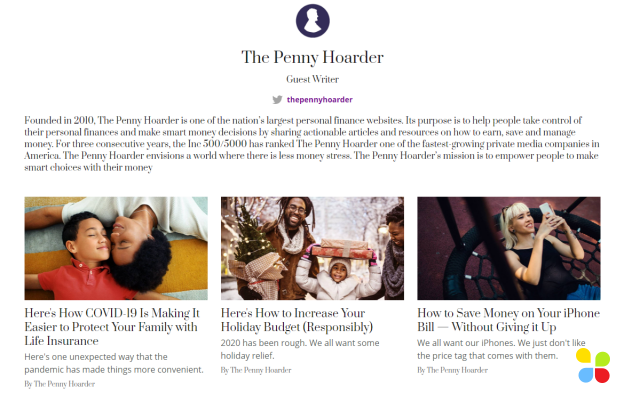
17. Interactive Content
With the rise of Artificial intelligence and Augmented Reality, the scope of interactive content is changing quite rapidly. Right now, the most common types of interactive content that you can write are contests, polls, and quizzes. They are helpful in engaging your audience and increase readership via participation.
You can also increase brand awareness and invoke brand loyalty by incentivizing your interactive content, but it might prove to be a one-way road. If you offer incentives less frequently, your audience might lose interest, and the engagement rate might drop.
Try This: Use social media to publish your interactive content for maximum engagement. Keep it short and simple. Try to use quizzes and polls to drive more traffic to your website. Write with the intent of keeping the audience engaged. Polls and quizzes that focus more on marketing and spoon-feeding brand information to the audience usually see poor engagement rates.
Example: As a business, you can choose a free questionnaire builder like Hubspot or paid tools like SurveyAnyplace.
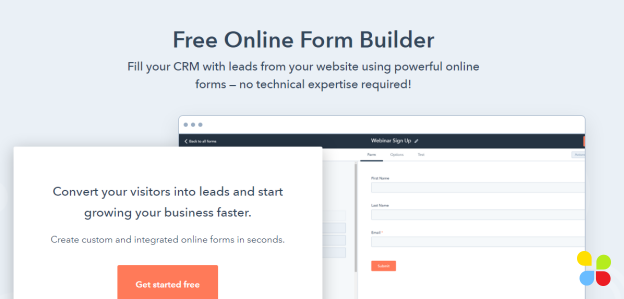
Other Types of Online Content worth a Mention
1. Infographics
Did you know that about 65% of B2B marketers and 59% of B2C marketers use infographics? The reason for this widespread use is that infographics are more than just one of the most attractive types of content. Infographics use visuals, symbols, and graphics used to break down complex numerical data, stats, and patterns in an easy-to-understand (and retainable) form.
People remember 65% of the information they perceive in visual form, which is significantly more than pure text content. Thanks to free tools like Visme and Canva, infographics can be easy and cost-effective to create. They can also benefit your website by attracting more backlinks.
Once you’ve created your infographics, you can publish them on your website as well as your social media pages (make sure its formatted accordingly).
Try This: Start by “translating” your text content (blog posts, articles, comparisons), especially the pieces that are rich in numerical content, into infographics—track whether infographics are attracting more traffic and views than their textual counterpart. Be concise while creating content for infographics. Use small sentences and keep a consistent color palette for maximum visual appeal.
2. Video
87% of marketing professionals rely on video content for their marketing, and 54% of consumers prefer seeing more video content from the brand and businesses they support. By 2022, video is expected to make up 82% of all consumer internet traffic. Video is the present and future of digital marketing, and it’s something that every business needs to take into account. Your marketing strategy will be incomplete if you are not giving adequate attention to the video content.
When it comes to different types of content creation, the video has a lot of variety. Some of the most potent types are:
Demo And How-To Videos: Demo videos can be used to display your products and services. They focus on the high-lighted features and have to balance educational content and marketing content based on the product and the target audience. Unboxing videos and behind-the-scene development videos can also come under the umbrella of demo videos. How-to videos are purely educational, and they create value for your audience by teaching them how to get the best out of your products. They need to be objective.
Brand And Explainer Videos: Brand videos can also be considered ads, and they are a remnant of what broad-spectrum TV ads used to be. But they can be a great way to emotionally connect with your target audience and create brand awareness. About 64% of consumers make purchase decisions after watching branded videos on social media platforms. Explainer videos are more granular and focus more on individual products and services that business offers. They can be used to showcase your competitive edge and explain to your target audience how they would benefit from your products and services.
Vlogs and Testimonial Videos: Both Vlogs and testimonials serve a common purpose: They make your business relatable. Your businesses Vlogs humanize your business and let your target audience see that the people running the business are humans, just like them. More entertaining Vlogs (with subtle marketing tactics) are more likely to attract an audience. Testimonial videos help your audience, and potential customers see themselves in your current consumers’ shoes. These videos help your potential customers make up their mind about your business and influence their purchase decisions.
Case Studies, Expert Interviews, and Webinars: For B2B businesses, case studies, expert interviews, and webinars are powerful video content types to display your expertise, thought leadership, and competitive edge. Case studies create nearly the same impact as testimonials do for B2C businesses. Expert interviews endorse the fact that your enterprise actually tries to harness the best talent and expertise. And webinars allow you to engage with the audience in your niche.
AR, VR, and Animated Video: Video content can be a lot of “fun” and is more visually appealing, especially if you can incorporate the right tools. Animated videos can be great at conveying educational content and sharing opinions. They also have the potential of staying above cultural biases. AR and VR videos are still not as commonplace, but if you may want to get a head start and start looking into these niche video content types, so you can come out as an industry leader when they become more commonplace.
Content Writing to Take Your Business to the Next Level
The journey from choosing the adequate types of content writing for your business to creating the right content is a long one. Even if you have the right expertise within your niche and you are considered a thought leader within our industry, there is no guarantee that you’ll be able to translate it into potent and effective content.
That requires writing (and content creation) skills, market research expertise, and an understanding of the marketing trends. There are all types of content writing services out there. Your best bet is to leverage the power of a content writing service that provides access to an expert content writing team across all types of online content.
You won’t have to step out of your domain of competency, and your content marketing will be done by people who are just as good at their job as you are at yours.
